Victim blaming cyclists - Part 2 - Infrastructure sucks
Last week, I pointed out a significant issue that Mitt i's article completely missed: the growing number of massive SUVs and pick-up trucks on our roads. But that's just one piece of the puzzle.
Mitt i’s article
Today, I want to dive into another big problem that often gets ignored—the poor infrastructure that makes our streets more dangerous and confusing for everyone. Many people don’t even know the traffic rules that should keep us safe. If you need a quick reminder, let’s revisit what the article didn’t cover and why it matters.
Mitt i’s article (1)
Infrastructure Improvements: A Key to Safety
Mitt's article states that cyclists must follow specific rules, one of which concerns the right of way. Let’s test your knowledge!
Who has the right of way at the crossings from A to J, bikes or cars? Be honest and test your knowledge of traffic rules before checking the answer. I’ve posted these pictures on Instagram to see how challenging they are for my followers to figure out, and I have to say, the results aren’t looking too good. Feel free to send me your answers!
(2)
A) This type of crossing is called a ‘cykelöverfart.’ It prioritizes bikes. A sign indicates that bikes are crossing this road, and ‘shark teeth’ are on the ground for cars to indicate they need to yield. 90% of the Instagram followers got this right.
B) This is a regular zebra crossing called ‘overgångställe.’ Cars must stop for pedestrians, not bikes. But cars must stop if you decide to get off your saddle and be a pedestrian that tags along the bike. 62% of the Instagram followers got this right.
C) This type of crossing is called a ‘cykelpassage.’ This is a tricky one. The cars exiting the roundabout need to stop for pedestrians and cyclists. On the other hand, the cars entering the roundabout need to stop for pedestrians but not for bikes. But cars must stop if you decide to get off your saddle and be a pedestrian who tags along the bike. 20% of Instagram followers said that cars have the advantage, and 80% said the bikes.
D) This is a forgotten paint job in the crossing, which gives cars an advantage over bikes. This is extremely dangerous since cars speed on the main avenue and often don’t brake much coming into this street. Only 25% of Instagram followers got this right. Mind you, I still didn’t get an answer from Solna municipality about this matter.
E) This is a very easy one, but some people got into their heads. The traffic light is green for cyclists, so they have an advantage over cars that come to the crossing. 70% of the Instagram followers got this right.
F) Whenever the sidewalk with a bike lane continues over the street, bikes and pedestrians have an advantage over cars. 90% of the Instagram followers got this right.
G) This one is another terrible cycle passage. Cars turning to the right need to yield to bikes, but bikes need to yield to cars that come straight to the crossroad. But cars must stop if you decide to get off your saddle and be a pedestrian who tags along the bike. 38% of Instagram followers said cars have the advantage, and 62% said the bikes.
H) This is a horrible overgångställe. It looks like the bike lane exists, but no one designed a crossing for a bike. Cars must stop for pedestrians, not bikes. But cars must stop if you decide to get off your saddle and be a pedestrian who tags along the bike. 46% of the Instagram followers got this right.
I) In areas with continuous cycle lanes, primarily if raised, drivers must always let cyclists and pedestrians go first. This rule applies even when drivers come from side streets, parking lots, or similar places. While cyclists have the right of way on these lanes, they still need to adjust their speed and be mindful of other traffic that might cross their path. Similar to pedestrian crossings, cyclists should clearly show their intentions when nearing an intersection, allowing drivers enough time to stop and yield. This is an answer I got from Sundbybergs municipality. 85% of Instagram followers got this right.
J) The previous rule applies, but when a car exits a parking lot, it needs to yield to others. 90% of the Instagram followers got this right.
(3)
The results are not good. I don't blame people - it's too complicated, especially when you have only a second to decide what to do on the road. What about kids? We should encourage biking and independence at a young age. How will a kid learn all these rules if adults struggle? Should kids die on the road if someone doesn't stop for them?
Not to mention that car drivers go to driving school and still break more rules than cyclists. (4)
If we want more sustainable cities, we need more people to bike. Why would cyclists need to yield to cars? Especially on minor roads and in urban environments? To make our city safer for cyclists and pedestrians, we need to do more than just limit large vehicles. We should also improve the infrastructure. To improve road safety, we can narrow the roads, use planter boxes as barriers, add speed bumps, and mark crossings for visibility and priority of cyclists and pedestrians. Most of the bike crossings should be ‘cykelöverfart.’
I bet no one in charge of traffic regulation in Stockholm bikes daily. Losing momentum and stopping for every car makes cycling a hassle. Making cars slower would make cyclists more visible, even if they are not dressed like Christmas trees.
In urban environments, the responsibility for safety should lie more with those driving larger and potentially more dangerous vehicles than cyclists and pedestrians already at risk.
Inspiration from the Netherlands
Just look at a typical crossing in the Netherlands. This country is an excellent example of how to create safe and sustainable cities with infrastructure and policies that are friendly to cyclists. Bikes have the right of way, and the crossings are clear. Cyclists don't need to wear helmets or bright clothes to stay safe. Drivers go over speed bumps, have special spots to stop, and wait for cyclists and pedestrians to go first. Cyclists benefit from clearly marked paths, while pedestrians have designated crossing areas. The priority for pedestrians may vary depending on the presence of zebra crossings. (5)
It’s evident at this intersection that the bike has the right of way.
In the Netherlands, cyclists encounter unique junction designs that differ from regular intersections. Here’s how it works and why it’s better:
What Makes Dutch Infrastructure Different?
Dutch infrastructure consists of some complicated parts, but it ultimately makes any mode of transport easier to use. I will cover some essentials.
Dedicated Bike Lanes: In the Netherlands, bike lanes are designed to allow cyclists to ride without sharing the road with cars. This is not so special, but in many other countries, bike lanes often disappear at crucial junctions where they are most needed. The Netherlands takes bike lane design very seriously. These are often separated from car traffic by vertical barriers like trees or curbs, offering safety to cyclists. Features like raised crossings make intersections safer for both cyclists and drivers.
Junctions in Sweden are often very confusing because there is no common language between transport authorities and municipalities. In this case, the railway is managed by the transport authorities while the roads fall under the municipality's jurisdiction.
First 2 pictures of unclear junction in Sundbyberg vs. Last picture of a Dutch junction
(6)
Advisory Lanes: These lanes allow cars and bikes to share space on narrow streets. Cars move into bike lanes when needed; without a middle line on the road, they slow down.
(6)
There are roads like this in Stockholm where one could apply the same principle.
Clear signals: In the Netherlands, traffic lights are designed to ensure traffic moves smoothly, even for cyclists. For example, some traffic lights can detect when a bike is coming and will automatically turn green if possible. This helps cyclists keep moving without having to stop too much. (7) Another cool feature is that some traffic lights will turn green faster for bikes when it’s raining! This helps cyclists get through intersections more quickly, so they don’t have to stay in the rain for too long. This intelligent design makes biking in the Netherlands more effortless and convenient. (8)
On the contrary, Solna municipality in Stockholm recently installed a new beg button. The light often doesn’t go green if someone doesn't press it. To activate the light, follow these steps: brake, place your feet down, lean, and press the button. The light should turn on immediately. Easy, right? It also depends on whether the parallel car traffic has a green light. This is so annoying that most cyclists go through the red light.
Beg button on Gränsgatan in Solna
Priority for Cyclists: Bikes should have the right of way at many junctions. This means cars must stop for cyclists, making accidents less likely. Someone with a heavier vehicle should be more responsible.
Designated Spaces: There are particular areas where cars can wait and let cyclists pass. Once they reach a bike lane, cars have a designated area where they can wait to assess whether they can merge onto another road, cross the intersection, or vice versa. This is also common in Sweden, but not to that extent.
(8)
Benefits Compared to Normal Intersections
Safety: Because cyclists have their own lanes and signals, they are less likely to get into accidents with cars, making biking much safer.
Less Confusion: With clear signs and signals for bikes, everyone knows what to do, reducing confusion for drivers and cyclists.
Encourages Biking: When people see that biking is safe and easy, more choose to ride bikes. This means fewer cars on the road, which is better for the environment. When more drivers are also cyclists, they will have more empathy for other people in traffic and know how to drive carefully.
Healthier Communities: More cyclists lead to healthier people. Biking is great exercise, and it also makes neighborhoods quieter and cleaner.
The Netherlands knows it's crucial to prioritize the safety of cyclists and pedestrians for a sustainable urban environment. Stockholm should aim for this kind of future.
Stockholm Needs Change
We need to think bigger for Stockholm to become a cyclist-friendly city truly. We must make our urban areas safe for everyone, whether walking, cycling, or driving. This means making policy changes and investing in infrastructure to prioritize people's safety over vehicle convenience.
It's time to include cycling safety in urban planning and not just leave it as an individual responsibility. Doing so can build a safer, more sustainable, and inclusive city for everyone.
Bibliography
Statistiken: Cyklisterna utsatta i sommartrafiken (2024) Mitt i. Available at: https://www.mitti.se/nyheter/allt-fler-cykelolyckor-i-sollentuna-6.26.233348.4f048889fe (Accessed: 30 August 2024).
https://www.cyklistbloggen.se/2020/06/den-uppdaterade-guiden-till-vem-som-har-vajningsplikt/
Cykelpassage och cykelöverfart (no date) Transportstyrelsen. Available at: https://www.transportstyrelsen.se/sv/vagtrafik/Trafikregler/Generella-trafikregler/Cykeloverfart/ (Accessed: 14 September 2024).
Toll, M. (2024) Cars or bikes? Surprising results of study reveal who breaks more road laws, Electrek. Available at: https://electrek.co/2024/01/11/cars-or-bikes-surprising-results-of-study-reveal-who-breaks-more-road-laws/ (Accessed: 3 October 2024).
https://bicycledutch.wordpress.com/2018/02/20/a-common-urban-intersection-in-the-netherlands/
Leina Xu (2016) Dialogue Netherlands 2016. Available at: https://www.northeastern.edu/holland2016sustrans/hw4-delft-bicycling-facilities/leina-xu/ (Accessed: 21 September 2024).
Not Just Bikes - YouTube. Available at:
(Accessed: 21 September 2024).
https://www.fastcompany.com/3055334/when-it-rains-rotterdams-bikers-get-to-go-through-lights-faster


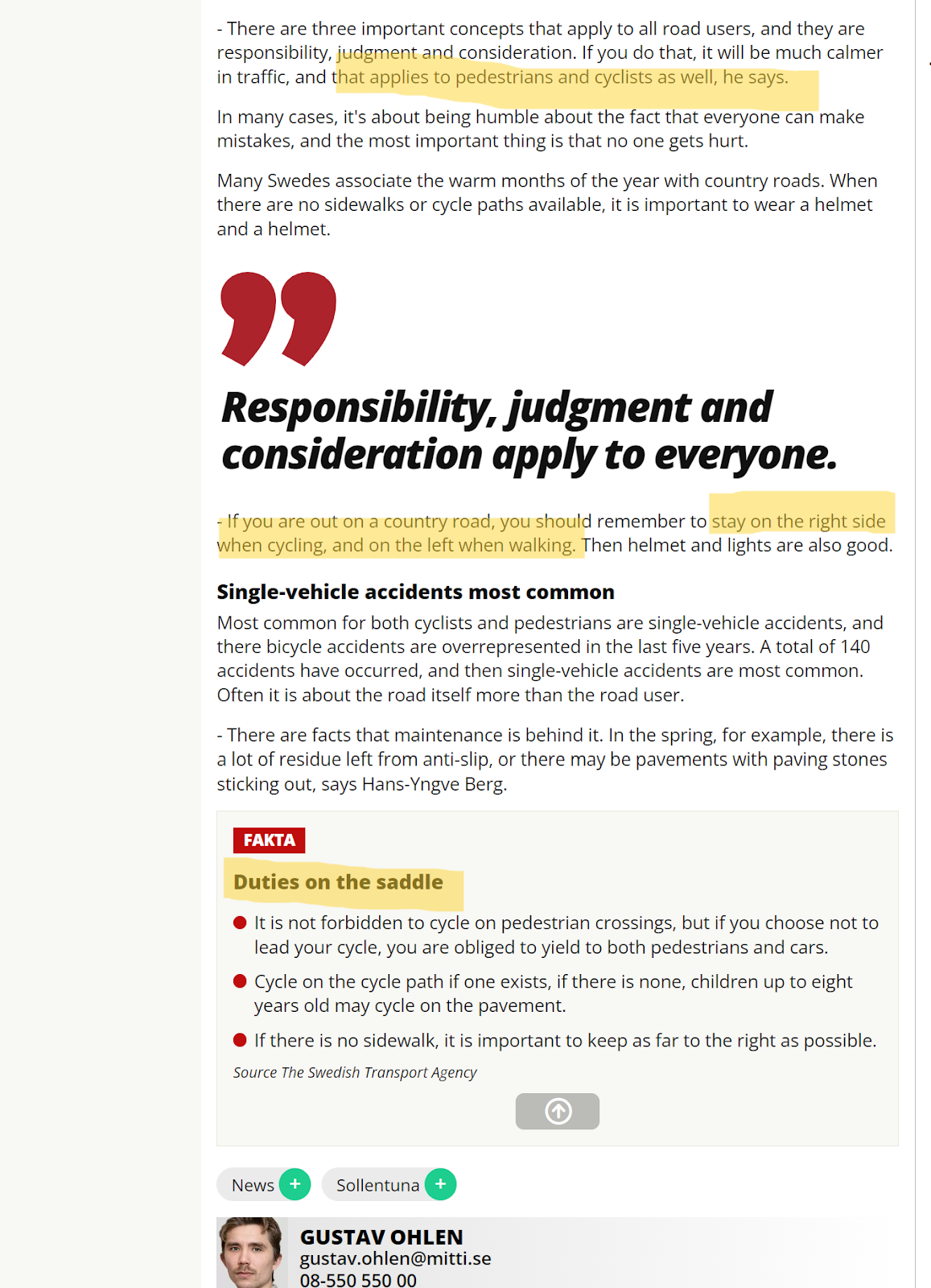
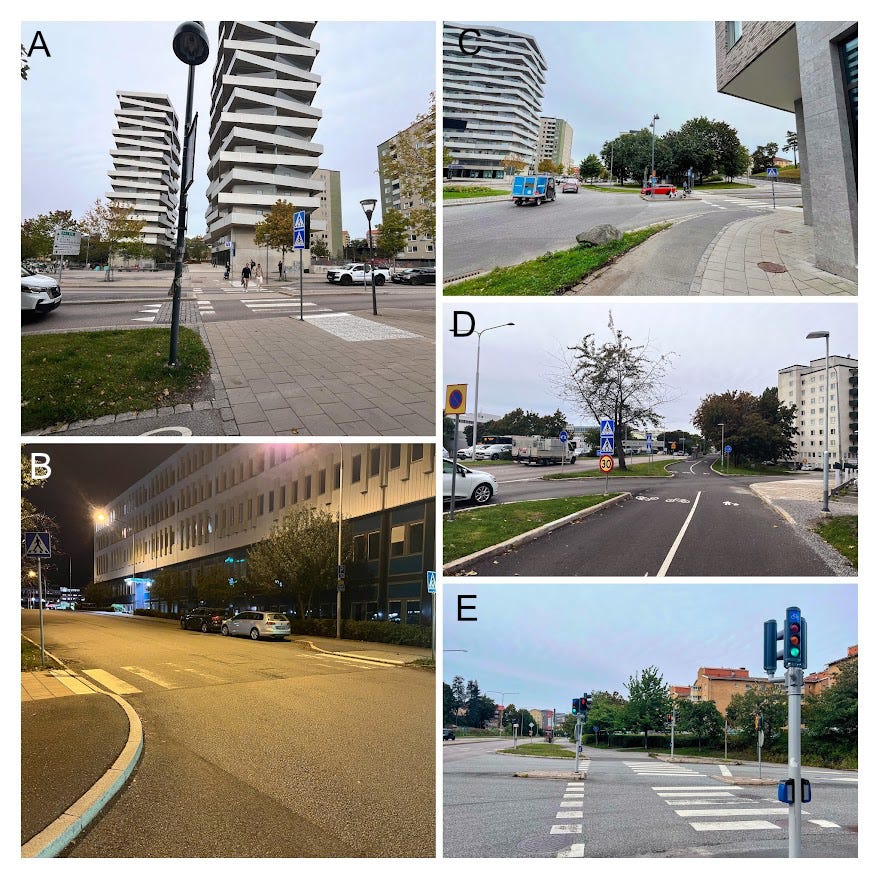
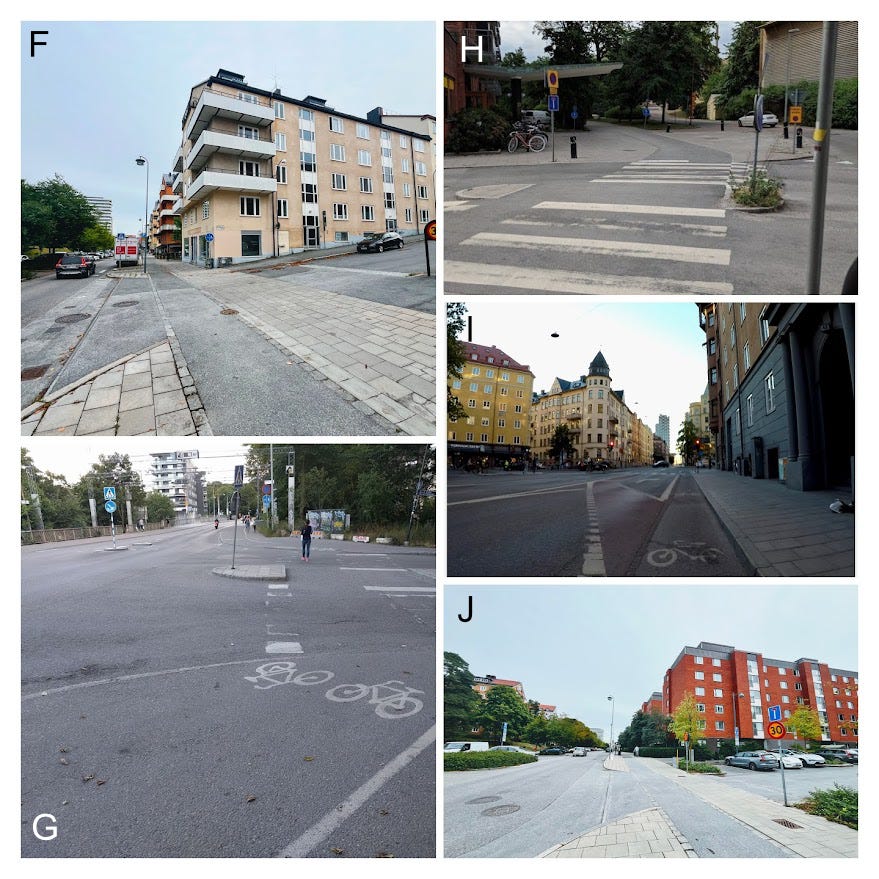
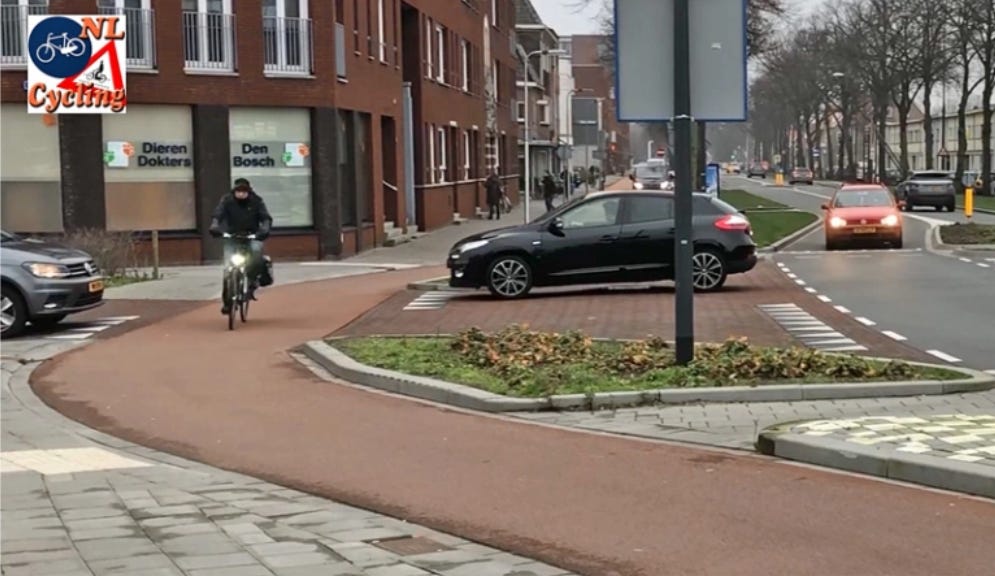
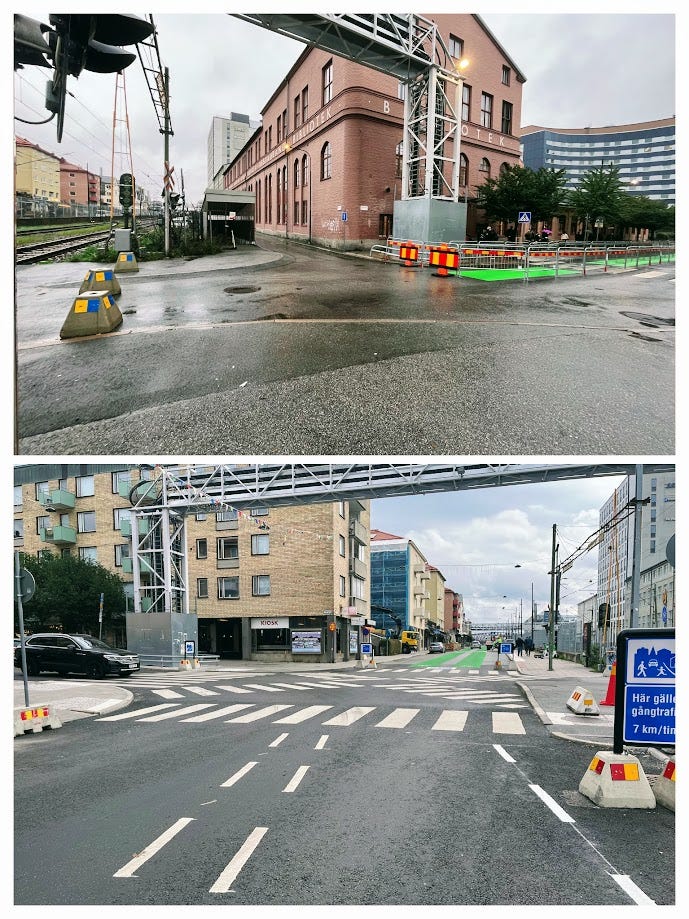
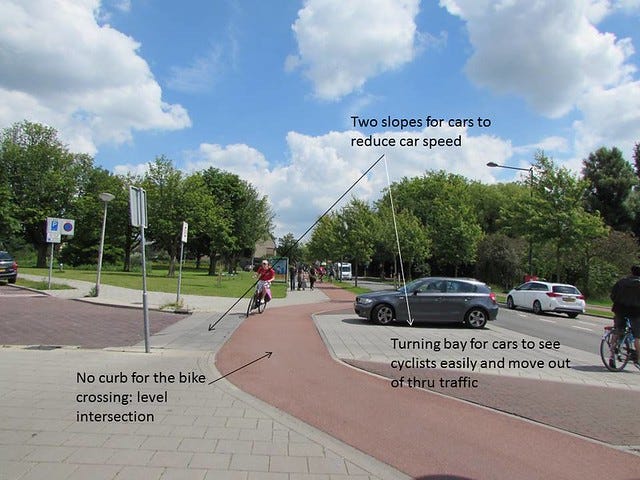
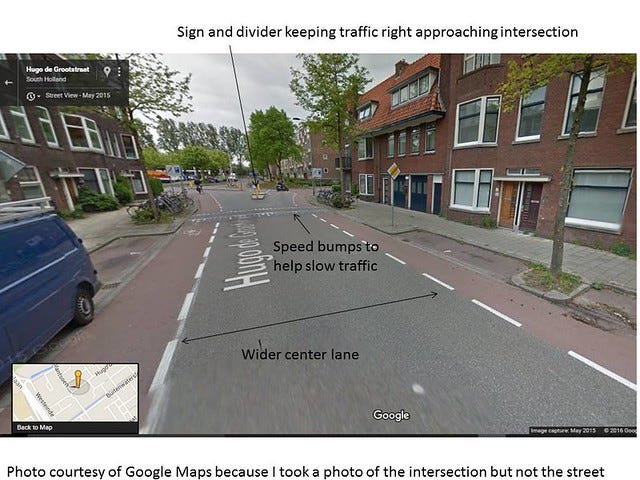
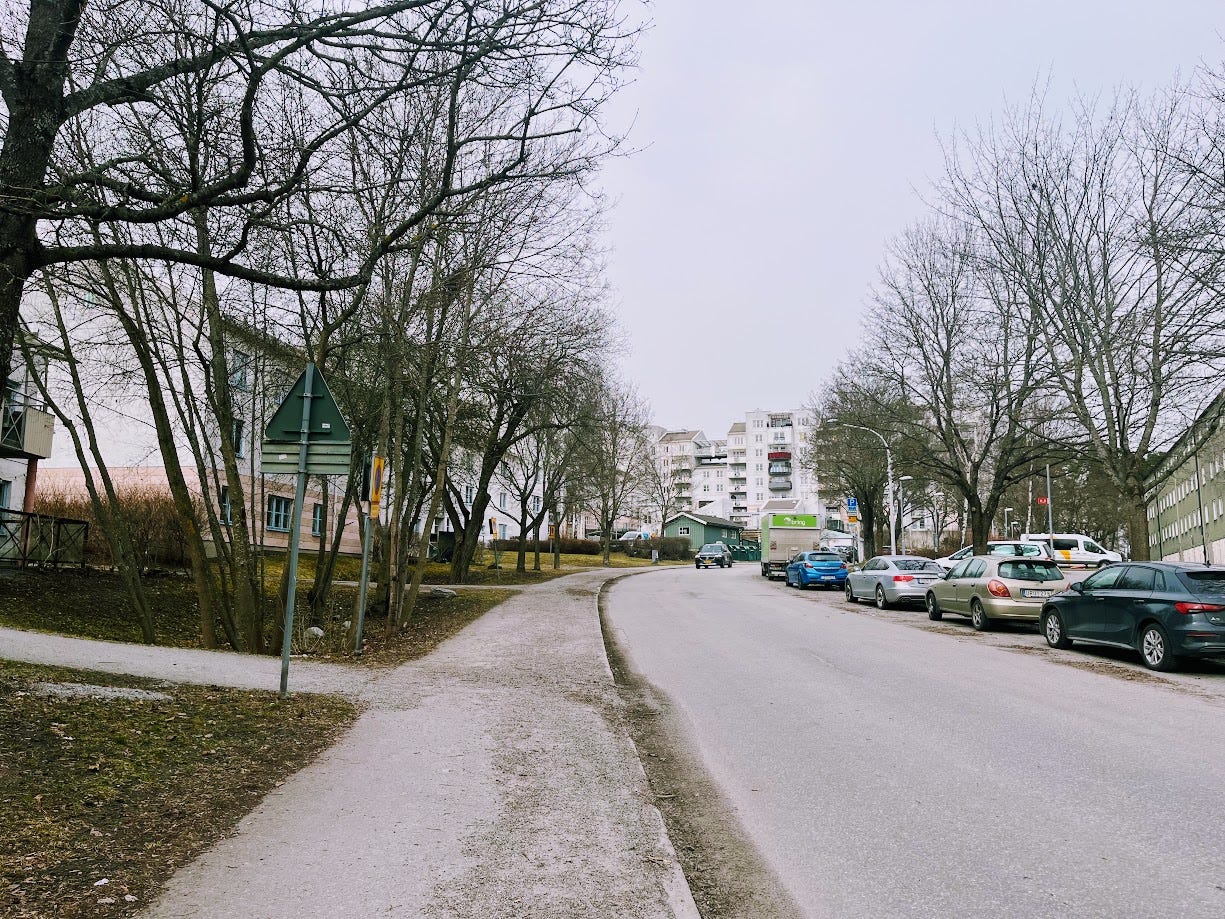
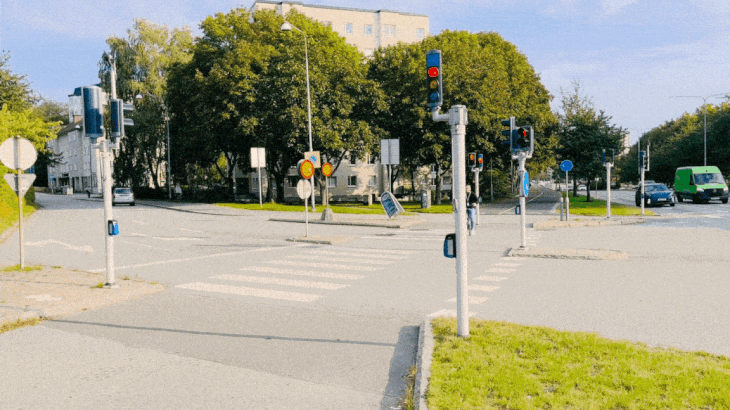
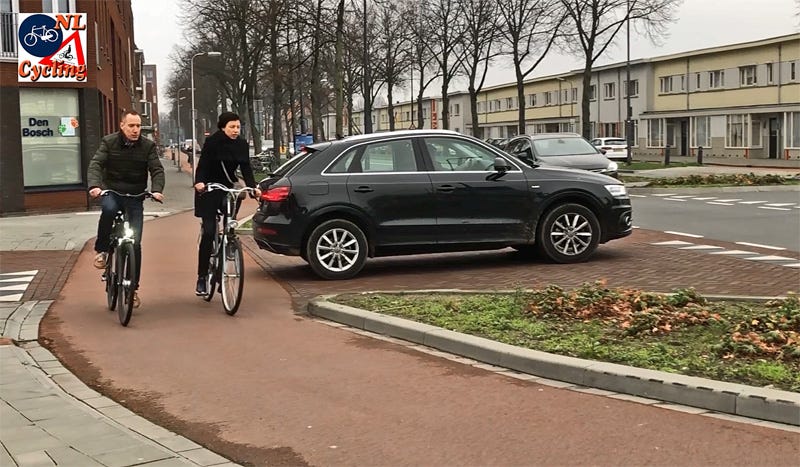
Friendly infrastructure is a must - the people that are already willing to cycle even in suboptimal conditions will still continue to do so. But in order to convince the rest that cycling can be an alternative mode of transport, the infrastructure must make it as easy and as safe as possible.